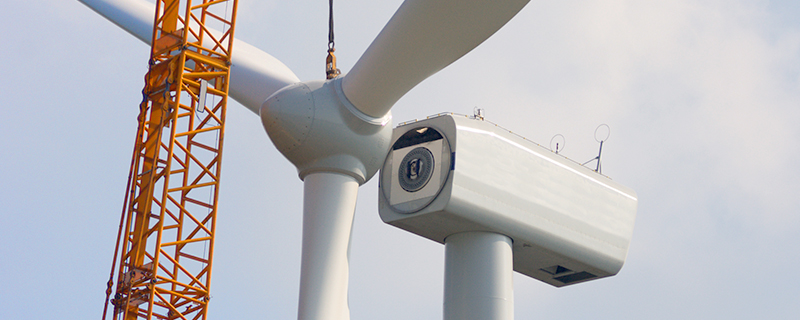Wind-turbines are proven to create reliable and pollution-free energy, and as technology innovates, the cost to develop and manufacturer them is only becoming more affordable. Research demonstrates that to get the most return on turbines, whether onshore or offshore: the bigger the turbine, the better.
There are two reasons for this: larger rotors and blades increase the capacity of the turbine’s total potential production, while taller fixtures with blades higher in the atmosphere increase the amount of power it can actually produce. These two factors are the driving force behind the efficacy of wind-turbines, and their ability to create renewable energy. To make this happen though, there are dozens of parts, components, and materials that go into building a wind-turbine. Motor brushes, or carbon brushes, are a small yet significant part of wind turbine design that we’ll be discussing in this blog.
Motor Brush Materials & Wind-Turbine Maintenance
Motor brushes are consumable, meaning there will be noticeable wear overtime and will need to be replaced. While moderate wear is necessary for proper wind-turbine operation and maintenance, excessive wear can create carbon dust in the slip-ring cabinet, causing reduced internal isolation.1
Also, a helpful tip to remember is that motor brushes that wear evenly indicate good performance.
Because reliability is of the utmost importance in wind applications that create power for industrial tasks, as well as for homes, businesses, and schools, it’s important to work closely with your engineer and parts manufacturers to determine the best motor brush materials. Two common options include:
- Copper carbon brushes are common, affordable and can last up to two years but require a good amount of maintenance due to higher carbon dust production.
- Silver motor brushes, on the other hand, are more expensive but stay cleaner, can withstand harsh climates and can last up to five years.1
Slip-ring compatibility and design is another component to consider. Despite its wear and tear, your motor brush must maintain a stable surface finish as to not impact the brush performance overtime.
Since wind-turbine motor brushes and slip-rings can be costly to repair or replace, it’s important to consider how the size, location, use (which impacts operating temperature) and potential performance of your wind-turbine will affect the quality and maintenance levels of the components you choose.
Motor Brush Springs for Wind-Turbines
An important component of your wind-turbine motor brush is the motor brush spring. These springs play a critical role in the efficient operation of a wind-turbine generator and are used to push the brush against the commutator in an electric motor, creating friction that transfers a current between the rotating part of the machine and its power supply. –
For high-performance wind-turbine generators, the brush material (or brush grade) and components used in the manufacturing process must be high-quality. In addition to the end details required for your application, some specifications to consider when choosing motor brush springs, include:
- Materials: Stainless steel is used for most applications but when a current is being carried through the spring, like in a wind-turbine motor brush, other materials are required.
- Life Cycle & Force: The force of the spring should be equal to the requirement of the application. The normal tolerance for a constant force motor brush spring is +/- 10%.
- Mounting: There are various mounting methods available based on your application, including single mounting and multiple mounting. Motor brush springs are typically mounted on a steel backplate that snaps into the motor frame next to the brush.
Wind is out-competing other sources on wholesale energy markets due to its ability to produce steady and affordable energy.2 As a result, wind-turbines are becoming larger and more prevalent. In fact, GE Renewable Energy announced that by 2021, it will have developed the biggest, tallest, and most powerful wind-turbine in the world: the Haliade-X.2 As the production of massive wind-turbines, for use onshore and offshore become more prevalent, there will be major shifts in the wind-turbine design process, requiring more collaboration, high-quality materials, and durable and affordable components.
At Vulcan Spring, our Constant Force motor brush springs give constant pressure to the brush allowing the motor to run longer and enabling your design to have the exact pressure for the motor’s entire life. With a Conforce® motor brush spring, you’ll add hours of operation to your motor or generator.
Contact us with questions or about a custom spring need for your industrial motor brush applications. Our responsive and helpful team is standing by.


